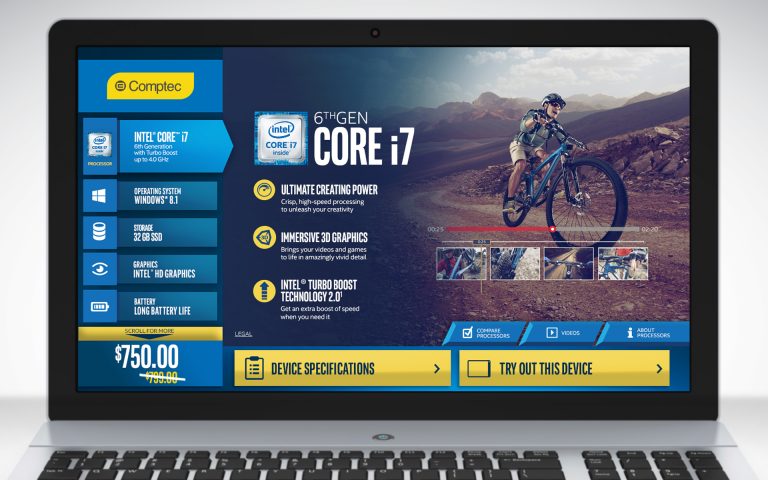Intel, Intelligent-Point-of-Sale (IPOS)
During the summer of 2019, I had the privilege of working with the amazing Technology team at Digitas NA in Chicago as a Front-End Software Engineering Intern. During my time at Digitas, I worked on Intel’s “Intelligent Point of Sale (IPOS)” software.
Note: The codebase I worked on is proprietary and private, so unfortunately I do not have pictures, but I’m happy to put you in contact with a reference if you’re curious about it!

IPOS is an application you might run into if you’re shopping for a PC at a retail store (like Best Buy, Staples, Walmart, Target, etc.). It ships in ~20 languages to retail stores internationally. I’m borrowing this description from Mark Montri because I think it describes IPOS perfectly:
— Mark Montri, (markmontri.com)
I worked on the front-end of two of the three version of IPOS:
- IPOS Gaming: Which is used for gaming computers running Intel® processors
- IPOS Chromebook: Which is used for Chromebook® laptops
Both of these versions rolled out in 2019, so unlike IPOS Standard (which has much more legacy code), these two applications use much more up-to-date technologies.
The IPOS team is about 15 strong, and we collaborated primarily on Gitlab and Jira while using Jenkins for continuous integration and deployment. I utilized the VueJS Javascript framework with Nuxt to add features to IPOS, SASS/SCSS for styling/animations, and Storybook to document any changes I made to Vue components. Some key features I worked on included:
- Adding a subtitle capability to all video players on IPOS, which works smoothly for any of the ~20 languages.
- Adding 3 new templates for OEM Gaming computers (i.e. the HP Omen 15 8th-Gen Intel Core I7 Processor). The three templates had to be re-orderable and repeatable, which was a fun challenge I accomplished using the templates’ JSON properties to correctly place the content and assets.
- Adding transition animations to Chromebook components and layouts
I collaborated with the engineering and QA teams to ensure my code did not create technical debt, met product specs, and was thoroughly documented.